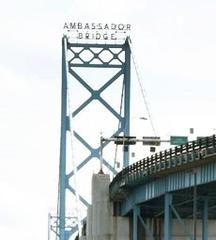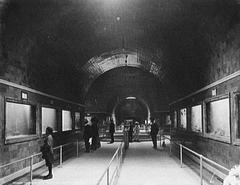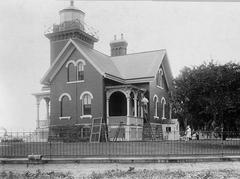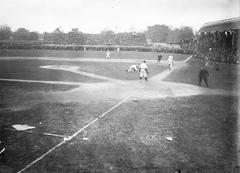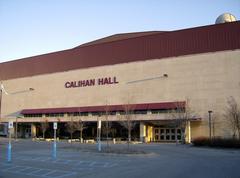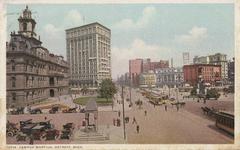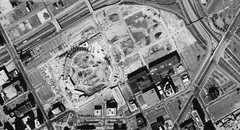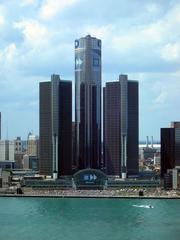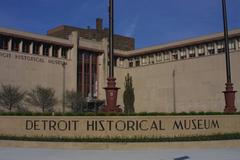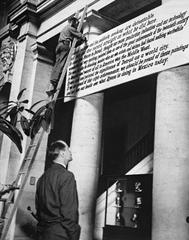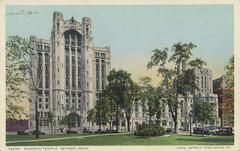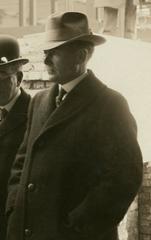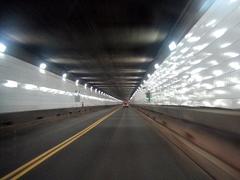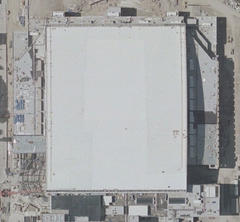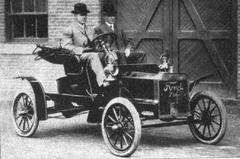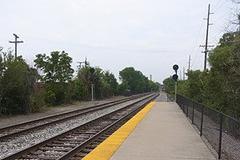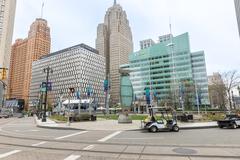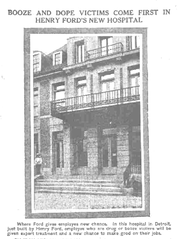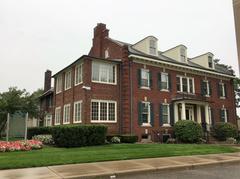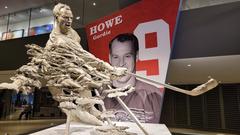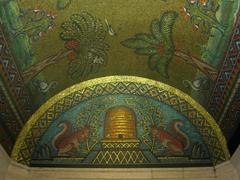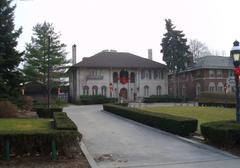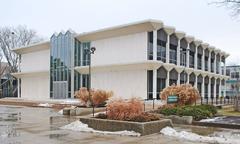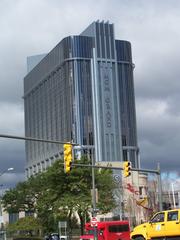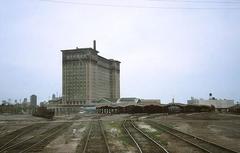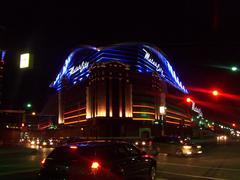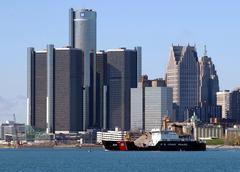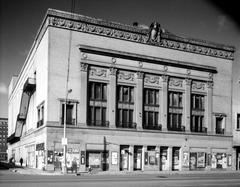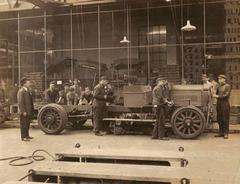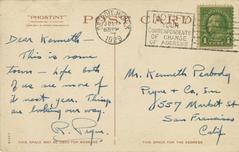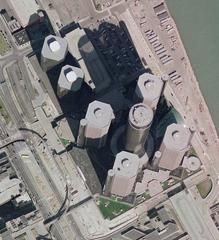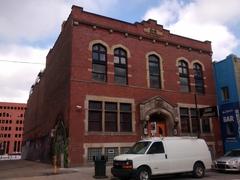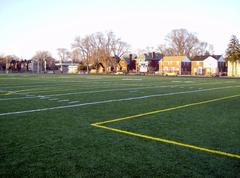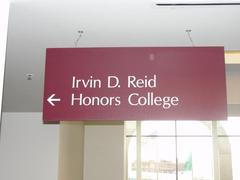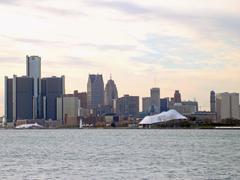
St. Thomas the Apostle Church Detroit: Visiting Hours, Tickets, and Historical Significance
Date: 04/07/2025
Introduction
St. Thomas the Apostle Church in Detroit stands as a powerful symbol of the city’s diverse religious history and immigrant experiences. Founded in 1914 to serve Detroit’s growing Polish-American Catholic community, the parish played a pivotal role in spiritual life, cultural preservation, and education on the city’s east side during a period of rapid industrialization and immigration (Detroit Historical Society). The church itself, built in 1923 and demolished in 1993, is no longer accessible, yet its legacy continues through the memories of former parishioners, the repurposed parish school, and the ongoing influence of Detroit’s Polish and Chaldean communities.
This comprehensive guide explores the history and heritage of St. Thomas the Apostle Church Detroit, offers practical information for contemporary visitors, highlights nearby attractions, and provides deeper context on St. Thomas the Apostle himself. Whether you are interested in architecture, ethnic heritage, or spirituality, this article will enrich your understanding of this important Detroit landmark.
Table of Contents
- Historical Overview of St. Thomas the Apostle Church Detroit
- Visiting St. Thomas the Apostle Church Detroit Today
- St. Thomas the Apostle: Patron Saint Profile
- Frequently Asked Questions (FAQ)
- Legacy and Cultural Memory
- Visual Resources
- Additional Resources and References
- Call to Action
Historical Overview of St. Thomas the Apostle Church Detroit
Founding and Early Development (1914–1923)
St. Thomas the Apostle Parish was established in 1914 to serve the needs of Detroit’s burgeoning Polish-American Catholic population on the city’s east side. The first church was a modest brick structure, dedicated in 1917, which quickly became a center for both faith and cultural life in the neighborhood (Detroit Historical Society). The parish complex grew to include a rectory, school, and convent, highlighting a strong commitment to community and education (Detroit Polish Museum).
Architecture and Community Impact
By the 1920s, the growing parish constructed a new, larger church designed by the Detroit firm Van Leyen, Schilling & Keough. The 1923 building was an architectural gem, blending Polish Catholic styles with Art Deco details. Its cruciform layout, ornate stained glass, and decorative reliefs made it a landmark of Detroit’s ecclesiastical architecture and a testament to the resilience and pride of the Polish-American community.
Demographic Changes and Parish Decline
After World War II, Detroit experienced significant demographic shifts, including suburbanization and the dispersal of the Polish community away from the east side. These changes led to a steady decline in parish membership, a trend mirrored by many urban ethnic parishes in the mid-20th century (Detroit Free Press Archives).
Closure and Demolition
Facing dwindling numbers, St. Thomas the Apostle Parish closed in 1989. Despite being added to the National Register of Historic Places that same year, the church building was demolished in 1993 (National Park Service). Today, only the former school and convent remain, with the school repurposed as the St. Thomas Assessment Center.
Visiting St. Thomas the Apostle Church Detroit Today
Site Access and Visitor Information
- Current Status: The original church building no longer exists; the former school (now the St. Thomas Assessment Center) and convent remain.
- Visiting Hours: There are no set visiting hours or public tours for the site itself. The Assessment Center serves as a community facility and is not open for general visitation.
- Admission: No tickets or fees are required to view the site from the street. Please respect the privacy of the current occupants.
- Location: 8363 and 8383 Townsend Avenue, Detroit, MI.
Nearby Historic Sites and Attractions
Despite the loss of the church building, visitors can explore Detroit’s rich Polish-American and Catholic heritage at these nearby sites:
- Sweetest Heart of Mary Church: A stunning example of Gothic Revival architecture and a vibrant Polish Catholic parish.
- Polish Village Historic District: A neighborhood filled with Polish shops, eateries, and cultural sites.
- Detroit Historical Museum: Exhibits on Detroit’s immigrant communities and religious history.
- St. Joseph Shrine: Another architecturally significant Catholic church.
- St. Anne de Detroit: One of the oldest Catholic churches in the United States.
Travel Tips
- Transportation: The site is accessible by car and public transit (check Detroit Department of Transportation schedules).
- Parking: Street parking is available, but always check local regulations.
- Guided Tours: While the St. Thomas site is not open for tours, many local historical and cultural organizations offer walking or bus tours of Detroit’s Polish and Catholic landmarks.
- Photography: Feel free to take photos from public sidewalks, but do not enter private property.
St. Thomas the Apostle: Patron Saint Profile
St. Thomas the Apostle, often called “Doubting Thomas,” was one of the twelve apostles of Jesus. Renowned for his initial skepticism and later profound faith, he is honored as the Apostle of India and is the patron saint of the blind, architects, and theologians. His feast day is celebrated on July 3rd (Catholic Online).
Frequently Asked Questions (FAQ)
Q: Can I visit or enter the original St. Thomas the Apostle Church building in Detroit?
A: No. The church was demolished in 1993. You can view the site and remaining parish buildings from the street.
Q: Are there any guided tours or events at the former church site?
A: The site itself does not offer tours, but some Detroit history and heritage tours include a stop at the location along with nearby Polish-American landmarks.
Q: Is there an admission fee or need for tickets?
A: There is no fee or tickets required to visit the site from the street.
Q: What are the best nearby attractions for learning about Detroit’s Polish heritage?
A: Sweetest Heart of Mary Church, Polish Village Historic District, Detroit Historical Museum, and St. Joseph Shrine are all excellent options.
Legacy and Cultural Memory
Though the original church building is gone, St. Thomas the Apostle Parish remains a vital part of Detroit’s story. Its history reflects the broader journey of immigrant communities in shaping the city’s culture and religious landscape. Today, the Chaldean Catholic community’s St. Thomas the Apostle Church in Detroit continues the legacy through vibrant worship, cultural events, social services, and community engagement (Chaldean News).
Visual Resources
- Historic Photographs: Available through the Detroit Historical Society’s digital archives.
- Neighborhood Maps: See the Polish Museum of America for maps of Detroit’s Polish neighborhoods.
- Alt Text Examples: “Historic photo of St. Thomas the Apostle Church Detroit exterior,” “Map showing location of St. Thomas the Apostle Parish in Detroit’s east side,” “Interior view of Sweetest Heart of Mary Church.”
Additional Resources and References
- Detroit Historical Society – St. Thomas the Apostle Parish
- Polish Museum of America
- Catholic Online – St. Thomas the Apostle
- National Park Service – National Register of Historic Places
- Chaldean News – Who Are the Chaldeans?
- Visit Detroit
- St. Thomas the Apostle Parish, Garden City
- Detroit Free Press Archives
- Detroit Department of Transportation (DDOT)
- Archdiocese of Detroit Events Calendar
Call to Action
Explore Detroit’s religious and cultural heritage by downloading the Audiala app for curated audio tours of historic sites, including Polish-American and Chaldean landmarks. Stay tuned to local event calendars and follow cultural organizations on social media for updates on festivals, tours, and community events.


